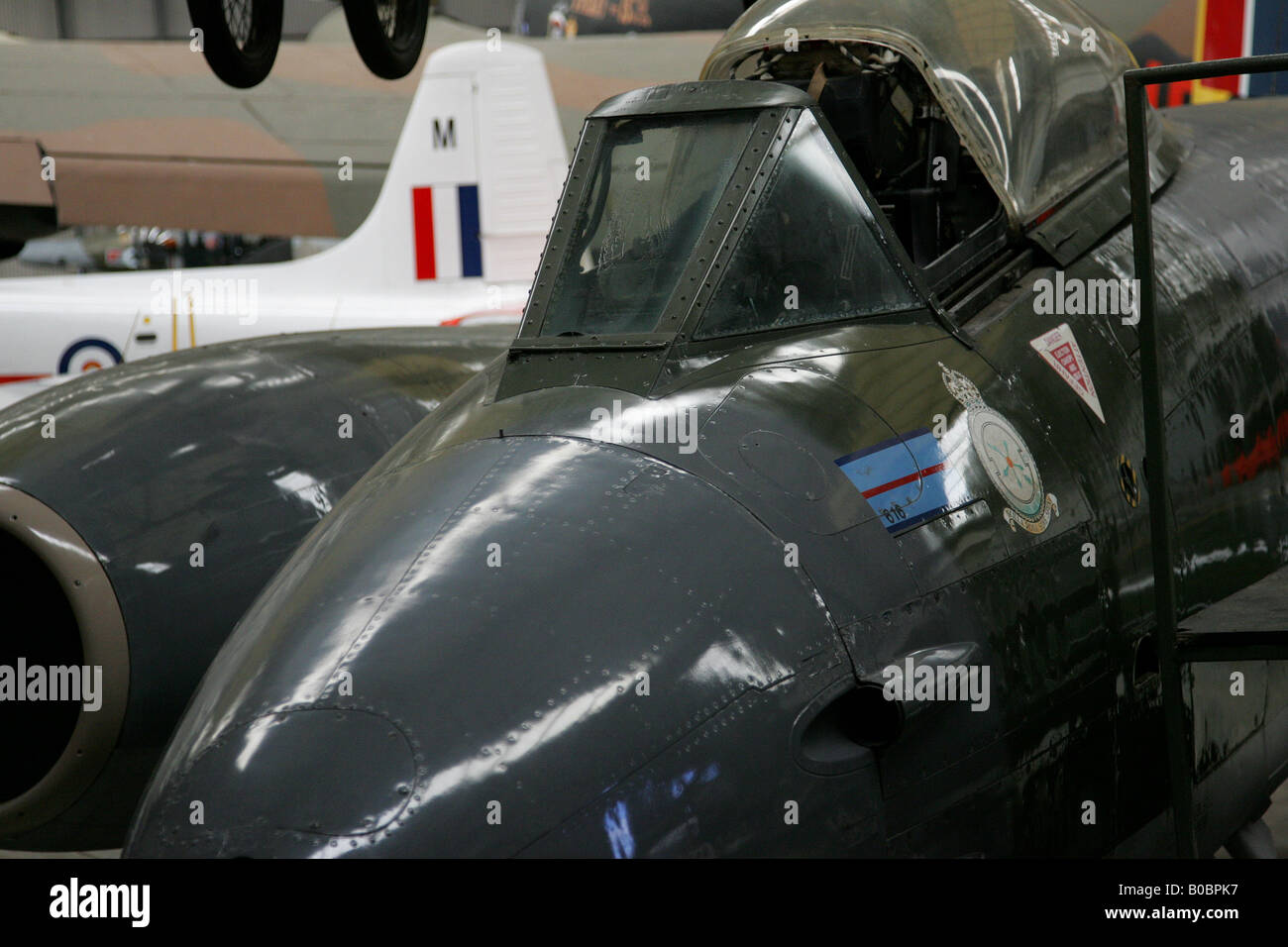1960s Fighter Jets - Beginning in the 1920s, aircraft performance continued to improve thanks to improved designs and drag-reduction technologies and more powerful engines, but by the early 1930s, speed seemed close to possible to some forward-thinking engineers. Exceeding the capabilities of piston engines and propellers. The reasons for this were not much appreciated at first. At speeds close to Mach 1 or the speed of sound (1,190 kilometers per hour at 745 mph at sea level and 660 mph at 11,000 meters at 36,000 feet). , the aerodynamic drag increases significantly. Furthermore, in the transonic region (from Mach 0.8 to Mach 1.2), air flowing over the atmosphere ceases to act as an incompressible fluid and produces shock waves. They also create significant environmental disturbances in airflow and pressure, creating not only drag but also control problems. Because the propeller blades that define the spiral path move through the air at a higher local speed than other aircraft, they enter this turbulent transonic regime first. As a result, there is a fixed limit to the maximum speed that propeller-driven aircraft can achieve. Such complex interactions in the transonic regime—rather than the expected shock-wave effects of supersonic flight, understood by ballisticians since the late 19th century—presented unique problems that were not resolved until the 1950s. Meanwhile, some pioneers tackled the problem directly by developing a new power plant, the jet engine.
In 1928, Frank Whittle, as a cadet at the Royal Air Force College, developed the idea of replacing the piston engine and propeller with a gas turbine, and the following year created a turbojet engine, compressor and combustion unit, as well as a turbine. in the same tube. Unaware of Wittel's work, three German engineers independently arrived at the same concept: Hans von Ohaine in 1933; Junkers Chief Civil Engineer Herbert Wagner in 1934. and government aerodynamicist Helmut Schelp in 1937. Whittle By the spring of 1937, he had a running bench model, but with the support of industrialist Ernst Henkel, von Ohen was in charge. The first jet-powered aircraft flew on 27 August 1939, two years before its British counterpart, the Gloucester E.28/39, on 15 May 1941. The intervention was decisive, Wagner's efforts led to the Junkers Jumo 004 engine. This was the most widely produced jet engine of World War II and the first axial flow turbojet engine in which air flowed directly through the engine. In contrast, the Whittle and Henkel jets used a centrifugal flow in which the air is discharged radially. Centrifugal flow offers the advantages of lightness, compactness, and efficiency, but at the expense of greater frontal area, increased drag, and a lower compression ratio that limits peak power. Many early jet fighters were powered by centrifugal-flow turbojets, but as speeds increased, axial flow became dominant.
1960s Fighter Jets

Although Wittel was initially out of position, the Germans developed their programs with persistence and ingenuity. Powered by two Jumo engines and with a wingspan of 18.5°, the Messerschmitt Me 262 was capable of reaching 845 km/h (525 mph). It was an effective bomber armed with four 30mm guns and unguided rockets, but was used too late to make a significant impact on the war. The Gloster Meteor entered service on 27 July 1944, two months before the Me 262. Although less capable than the German fighter, the V-1 was effective at intercepting "buzz-bombs". In the last months of the war, the Germans, desperate to fight Allied bombers, also turned to rocket launchers. Powered by a hydrogen peroxide rocket designed by Helmut Walther, the Comet performed impressively, but its short range and ineffective artillery made it a failure. In addition, the fans are unstable and often explode on landing.
Stunning Images Of The Yf 12: A Mach 3 Fighter Jet Of The 1960s
Meanwhile, the US aviation industry entered the jet engine race when General Electric received the Whittle engine in 2015. It was slower than the piston-engine fighters of the time, but in 1943-1944. , a small team led by Lockheed designer Clarence ("Kelly") developed the Johnson P-80 Shooting Star. The P-80 and Britain's modern de Havilland Vampire were the first successful fighters powered by a single turbojet engine.
World War II jets ushered in the first generation of jet fighters that applied the turbojet engine to existing airframe technology and aerodynamics. (Indeed, some post-war aircraft, notably the Soviet Yakovlev Yak-15 and Yak-23 and the Swedish Saab 21R, were simply conversions of propeller fighters. The aircraft pushed for high speed, but due to high fuel consumption and the slow acceleration of early turbojets, they lacked range and maneuverability. More importantly, they were limited to subsonic speeds because the relatively thick airfoils were subject to compression problems in transonic flight—especially at high altitudes where high speeds were required. To take off in the narrow atmosphere, the aircraft quickly reached transonic speeds as as a result, the first generation of jet aircraft performed better at low altitudes.
Other first generation fighters included the US McDonnell FH Phantom and the British Hawker Sea Hawk (the first jet carrier fighters), the McDonnell F2H Banshee and the French Dassault Oragan. These One-Sit Day Warriors First generation all-weather fighters equipped with radar and a second crewman entered service in 1950 and saw service into the late 1950s.
Second degree assault washington state, 2nd degree assault sentence, 2nd degree aggravated assault, 2nd degree assault mn, 2nd degree assault, 2nd degree assault definition, 3rd degree assault washington state, 4th degree assault washington state, 2nd degree felony assault, 4th degree assault washington, what is assault 2nd degree, 2nd degree assault charges